Preservation of goods
How to store fresh ginger for a long time, prevent mold for export
High Quality Ginger Growing Areas In Vietnam
Vietnam is one of the countries with a large tradition of growing and producing ginger in the world. High-quality ginger growing areas in Vietnam are mainly located in the mountainous regions of the North and Central regions.
Some prominent areas for growing high quality ginger in Vietnam include:
- Ky Son, Nghe An: This area is famous for producing high-quality specialty ginger. Ginger in Ky Son is grown in communes such as Na Ngoi, Bao Thang, Dooc May, Muong Long, Huoi Tu, Tay Son, Nam Can, Nam Can, Muong Ai, Muong Tip, Keng Du, Na Loi, Bac Ly, My Ly and Bao Nam.
- Ginger Nguyen Lieu Viet: Ginger Viet production company has a large area of raw ginger cultivation, with a total area of over 200 hectares. Annual output reaches over 10,000 tons of ginger.
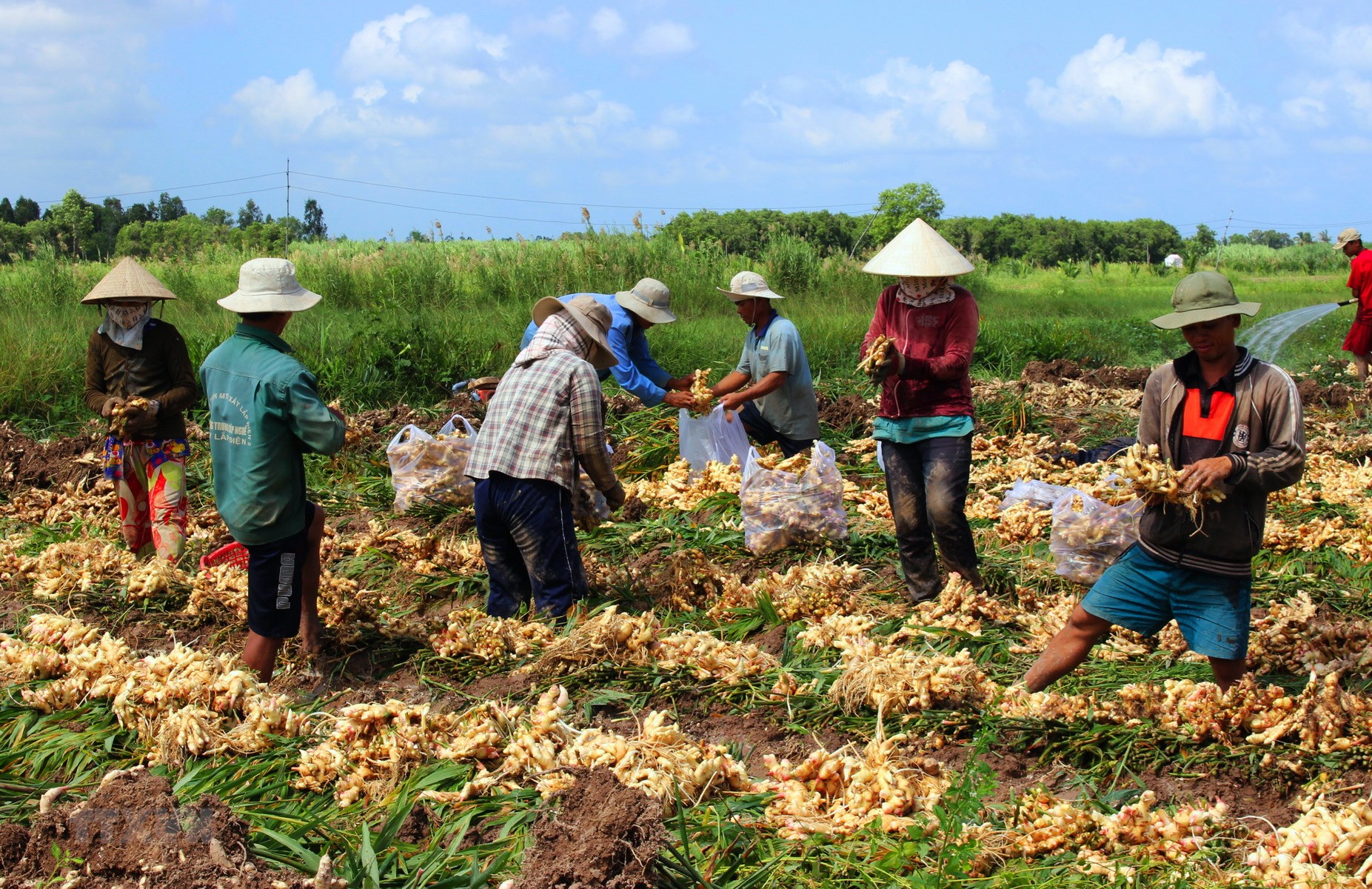
- Bac Kan: This area needs to have a reasonable ginger growing area planned to optimize production efficiency.
- Luc Khu, Cao Bang: Ginger grown in this area has brought high economic efficiency, helping to improve the lives and income of ethnic minorities.
- Ha Quang District, Cao Bang Province: This highland area has innovated and developed through growing ginger for export, helping to create high income for the people.
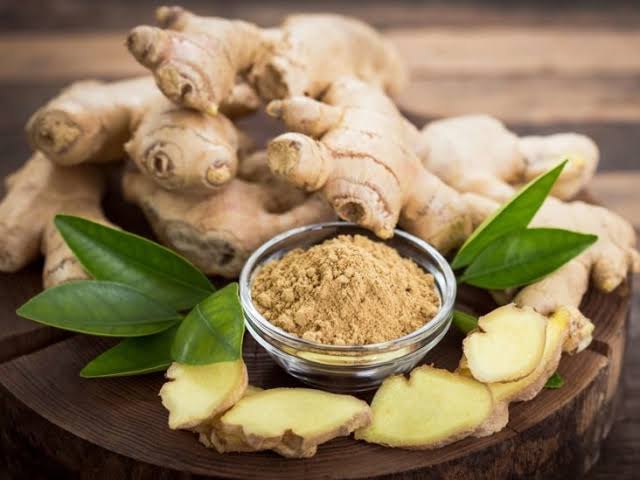
>> See More : Top 11 Methods of Preserving Fruits and Vegetables After Harvest
| ✅Preserving vegetables and fruits: | ⭐Ethylene absorption, anti-mold, sterilization, anti-dehydration. |
| ✅Effective: | ⭐Keep fresh longer, reduce damage, slow ripening & aging. |
| ✅Standard: | ⭕Food safety, US FDA |
| ✅Biological products: | ⭐ Chitosan, 1-MCP, MAP, Natamycin |
| ✅Certification: | ⭐Full quality certification. |
Where Does Vietnam Export Fresh Ginger?
According to information from economic and trade sources, fresh ginger from Vietnam is currently exported to many international markets, one of the main markets of which is Australia.
In the first 4 months of 2021, fresh ginger exports from Vietnam to Australia increased significantly, about 1350% over the same period, reaching a value of more than 348,000 AUD. The Australian market is opening up many opportunities for fresh ginger from Vietnam due to high demand.
Along with Australia, fresh ginger from Vietnam is also exported to many other markets such as Europe, the United States, Japan, Korea and the Middle East. The total export volume of fresh ginger from Vietnam reaches tens of thousands of tons per year, and this product has achieved quality certification such as HACCP.

For frozen ginger, there has also been an increase in exports to foreign markets, especially Australia. It is expected that frozen ginger exports to Australia could reach a value of up to 100 billion VND this year. This shows the strong growth of Vietnam’s ginger export industry in recent times.
However, exporting fresh ginger to Vietnam is not only an opportunity but also a challenge. Producers and exporters face challenges such as price competition, quality and food safety standards of importing countries.
To cope with these challenges, manufacturers and exporters must focus on improving product quality, strengthening quality management and implementing technological improvements to increase production efficiency.
Causes of Post-Harvest Ginger Spoilage
After harvest, ginger root can be damaged for a number of different reasons. Some causes of post-harvest damage to ginger root include:
Sudden change in living conditions: The main cause of post-harvest damage to ginger is the sudden change in living conditions after harvest. This is completely consistent with the physiological characteristics of ginger plants.
Mold: Ginger is a food that is sensitive to humid environments and is susceptible to mold and spoilage. Mold on ginger can produce high levels of Safrole, a substance that has been listed as a carcinogen by the WHO. Therefore, consuming moldy ginger can be dangerous to your health, especially if you continue to use it for a long time.
Respiration and sprouting: After harvest, ginger roots continue to undergo growth processes such as respiration and sprouting. These activities consume energy and nutrients, contributing to the deterioration and weakening of the root.
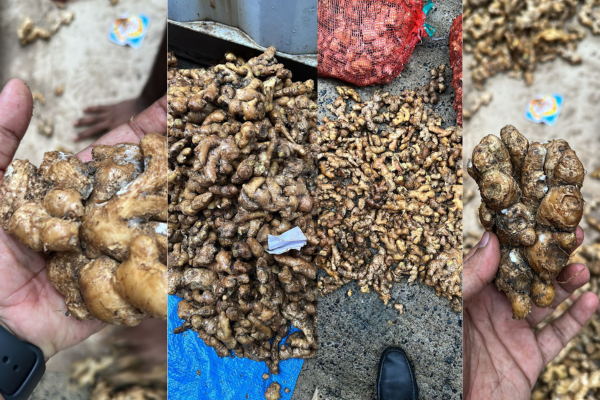
Physical and chemical factors: Physical factors such as impact, improper temperature and humidity after harvest can also cause damage to ginger roots. In addition, chemical factors such as the growth of bacteria, fungi and viruses can also cause damage to the roots.
Lack of proper storage procedures: The choice of method of storage of ginger root after harvest can affect the spoilage. Improper choice of storage method or procedure can cause loss of quality and reduce the storage life of the root.
Improper storage environment: Storing ginger in an improper environment, such as too high or too low temperature, inadequate humidity can also contribute to post-harvest damage of ginger.
The Effect of Temperature and Humidity on Ginger
The effects of temperature and humidity are two important factors affecting the preservation and deterioration of ginger root after harvest.
- Temperature: Temperature has a strong impact on the preservation of ginger. Too high a temperature can cause the growth of fungi, bacteria and viruses on the surface of the root, leading to rapid deterioration. Conversely, too low a temperature can cause the ginger root to stagnate in the respiratory process and lose water, causing wilting, drying and loss of nutrients.
- Humidity: Humidity is a key factor in preserving ginger. Too much humidity encourages the growth of bacteria and fungi, causing the root to rot and decay. Too little humidity dehydrates the root, causing it to dry out and lose its freshness.
To properly preserve ginger and limit the effects of temperature and humidity, you can try the following measures:
- Store at the right temperature: Make sure that the ginger root is stored at the right temperature, usually between 10°C and 15°C. This temperature helps prevent the rapid growth of bacteria and fungi.
- Humidity Control: Make sure that the storage environment of the ginger root has the right humidity, usually around 60% to 70%. This helps the root retain its freshness and prevents the overgrowth of bacteria and fungi.
- Use proper packaging: Packaging can help control the humidity and temperature of the ginger root. The packaging should be designed to allow for ventilation and maintain the freshness of the root.
- Store in a cool place: To prevent the effects of high temperatures, you should store ginger root in a cool place and away from direct sunlight.
In summary, the effects of temperature and humidity are two important factors that need to be controlled when storing ginger roots after harvest to avoid spoilage and loss of quality.
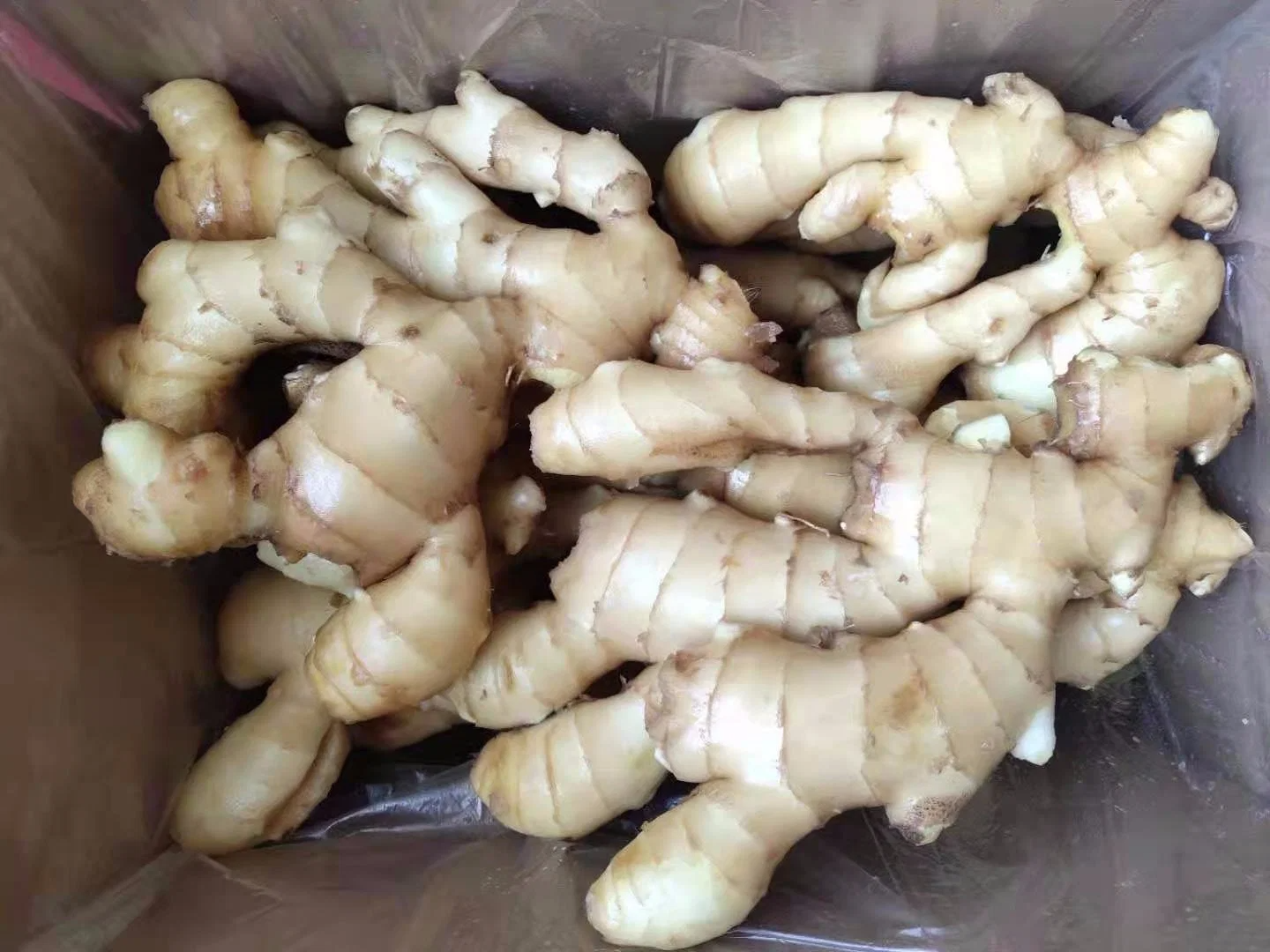
Temperature for Preserving Fresh Ginger for Long Travel
Storage temperature is an important factor in keeping ginger fresh for a long time and preventing it from spoiling when stored for a long time. To preserve fresh ginger for a long time, you should follow these principles:
- Ideal Temperature: The ideal temperature for storing fresh ginger is between 10°C and 13°C (50°F and 55°F). This is a uniquely cool and humid temperature that helps prevent the growth of bacteria and fungi.
- Avoid extreme low temperatures: Extreme low temperatures can cause the ginger to stop respiration and lose water. This can lead to wilting and loss of nutrients.
- Avoid excessive heat: Excessive heat can accelerate the spoilage and decomposition of ginger. This causes the root to quickly lose its freshness and nutrients.
- Check and maintain temperature: Make sure the temperature in your cold storage or freezer is set and checked regularly. If possible, use a thermometer to monitor and adjust the temperature as needed.
- Proper storage: During storage, place ginger in a paper bag or breathable plastic bag to prevent moisture from rotting. Make sure not to expose ginger directly to air to avoid dehydration.
- Do not seal ginger: Avoid packing ginger in plastic bags or airtight containers. This can create a humid environment, causing the ginger to rot quickly and develop mold. Use perforated Map modified atmosphere bags to increase preservation efficiency and keep ginger fresh.
- Avoid sudden temperature changes: When taking ginger out of cold storage for use, let it settle to room temperature before you start using it. Sudden temperature changes can cause the ginger to swell or start to release juice.
Remember, the longevity of fresh ginger depends on the original quality of the ginger root, so choose fresh, undamaged ginger roots for storage.
Packaging Specifications for Exported Ginger
Packaging of ginger for export is an important factor to ensure the product is preserved and transported effectively. Below are some packaging specifications of exported ginger you can refer to:
- Choosing quality fresh ginger: First of all, choose fresh ginger roots that are undamaged and show no signs of disease to ensure the quality of the product from the beginning.
- Wash and dry: Before packing, rinse the ginger under cold water to remove dirt and impurities. Then dry it carefully to avoid creating conditions for bacteria to grow.
- Wrap each ginger root separately: To avoid impact and impact from different ginger roots, wrap each ginger root separately in wrapping paper or a breathable plastic bag.
- Use wooden boxes or crates: To protect ginger from the effects of temperature and impact during transportation, you can use wooden boxes or crates to contain the ginger roots.
- Protective layer: Inside the wooden box or wooden crate, you can use protective layer with materials such as foam, insulation paper or foam beads to minimize impact and temperature fluctuations.
- Pack carefully: Make sure the ginger roots are placed in boxes or crates tightly and securely to avoid them moving around during transportation.
- Marking and labeling: Mark and clearly label information about the origin, type of ginger, weight and harvest date on the box or wooden crate. This makes it easier to track and manage the product.
- Double Check Before Shipping: Before the product is shipped, double check the packaged ginger roots carefully and make sure all markings and package labels are correct.
- Transportation Note: When transporting exported ginger, use a means of transport with good temperature conditions to ensure that the ginger does not get too hot or too cold during transportation.
- Documents and certifications: Make sure you have all the relevant documents and certifications related to exporting ginger as per the destination country regulations and other relevant regulations.
Please note that packaging specifications may vary depending on country regulations and mode of transportation, so you should specifically refer to and comply with relevant regulations.
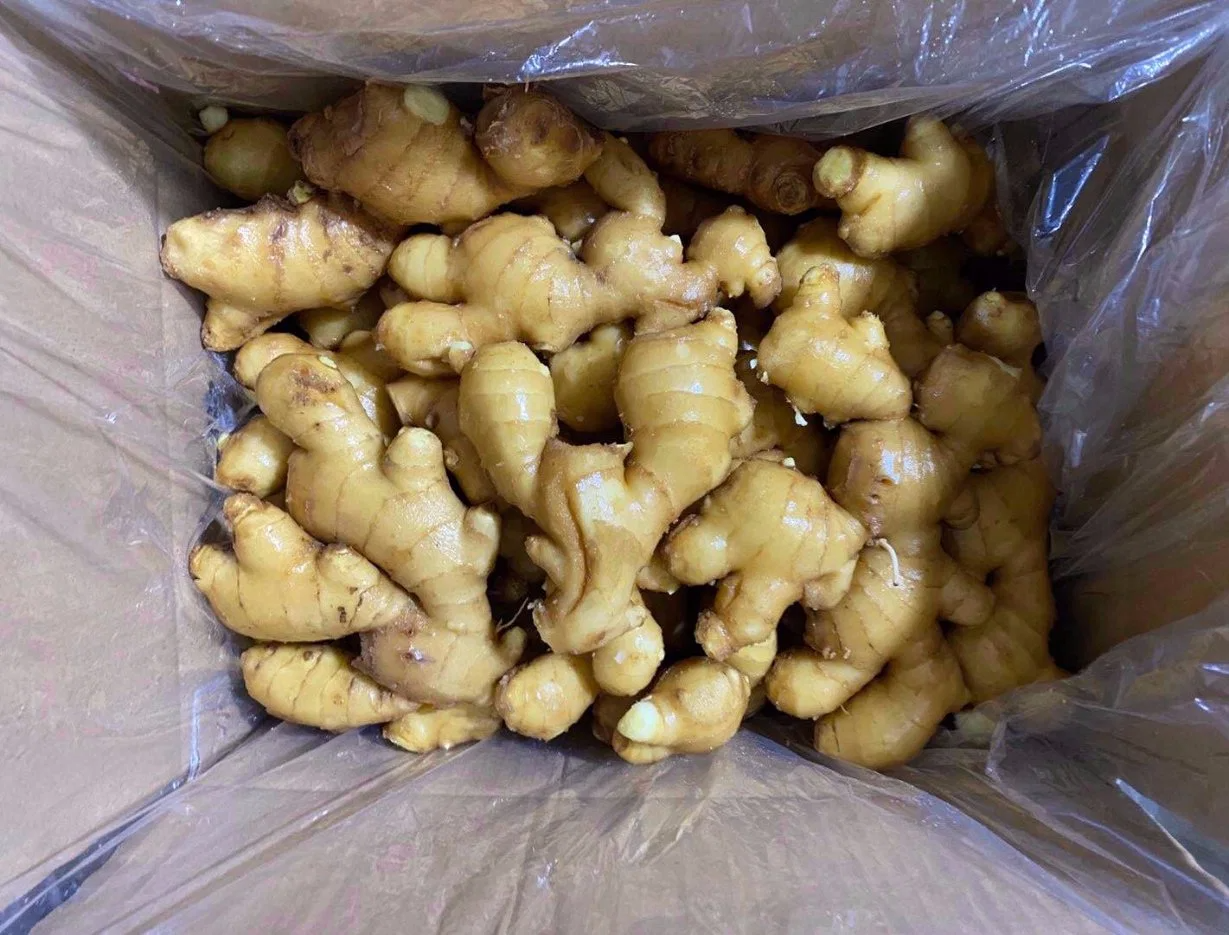
Ways to Preserve Fresh Ginger for a Long Time, Prevent Sprouting and Prevent Mold
How to Preserve Ginger from Sprouting
To preserve ginger without letting it sprout, you can apply the following measures:
- Inspect ginger before storing: Before storing, inspect ginger thoroughly to ensure that it shows no signs of sprouts or any damage.
- Choosing quality ginger: Choose fresh ginger roots that are not sprouted or damaged.
- Store at the right temperature: Ginger tends to germinate in warm temperatures, so store ginger in a cool, dry place with lower temperatures.
- Use plastic bags: Wrap each ginger root in plastic bags or wrapping paper to create a breathable environment and reduce humidity, thereby helping to prevent germination.
- Using Natacoat biological preparation: In case you want to preserve ginger longer, you can use the non-toxic food preservative Natacoat .
- Keep ginger separate: Place each ginger root separately in a plastic bag or wrapping paper to avoid contact with each other and prevent the germination process from spreading.
- Avoid direct light: Direct light can stimulate the germination process. Store ginger in a place out of direct sunlight.
- Regular Checks: Regularly monitor the condition of ginger during storage to detect and remove any ginger that shows signs of sprouting.
Note that, even with the above measures, preserving ginger from sprouting is not completely guaranteed, as sprouts can develop under the influence of temperature and environment. However, these measures can help limit this from happening.
Natacoat Biological Product – Preserves Fresh Ginger for Long Time, Anti-Fungus, Ensures Export Standards to Europe and America
Using Natacoat biological product to preserve fresh ginger for export brings many important benefits:
- Anti-Mold: Natacoat contains natural natamycin, which has the ability to inhibit and prevent mold. When using Natacoat to wrap ginger, you ensure that the product will not be attacked by harmful molds. This helps maintain the quality and quality of ginger during transportation and export.
- Food Safety: Natacoat is a natural product and is considered safe for human consumption when used in food preservation. The application of Natacoat to preserve ginger helps ensure that the product is not contaminated with harmful chemicals or preservatives that may be harmful to the health of consumers.
- Maintains Flavor and Nutrients: Natacoat helps ginger retain its natural flavor and important nutrients. When ginger is well preserved, its flavor and nutritional value are not reduced, helping the product to retain its high quality and appeal to consumers.
- Increased Export Potential: Using Natacoat to preserve ginger can help increase the export potential of the product. Safe preservation and quality maintenance of the product will create momentum for the product to effectively reach the international market.
- Maintain Shelf Life: Natacoat biological products have the ability to extend the shelf life of products. This is especially important during transportation and export, when products must maintain quality over many stages and periods of time.
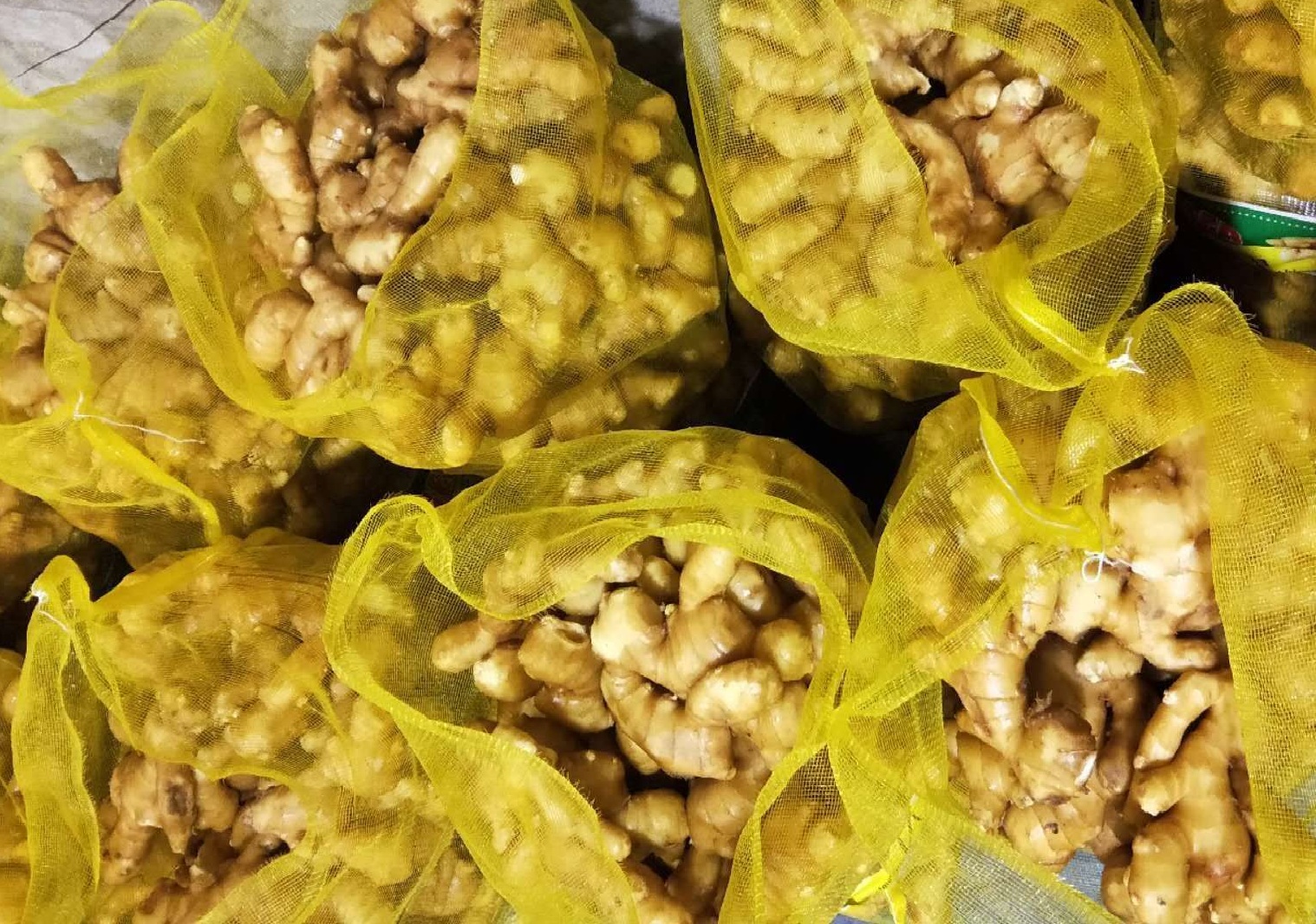
In summary, the use of Natacoat biological products to preserve exported ginger helps ensure that the product is mold-free, safe for health, and maintains important flavors and nutrients. This is a useful solution to ensure product quality during the export process.
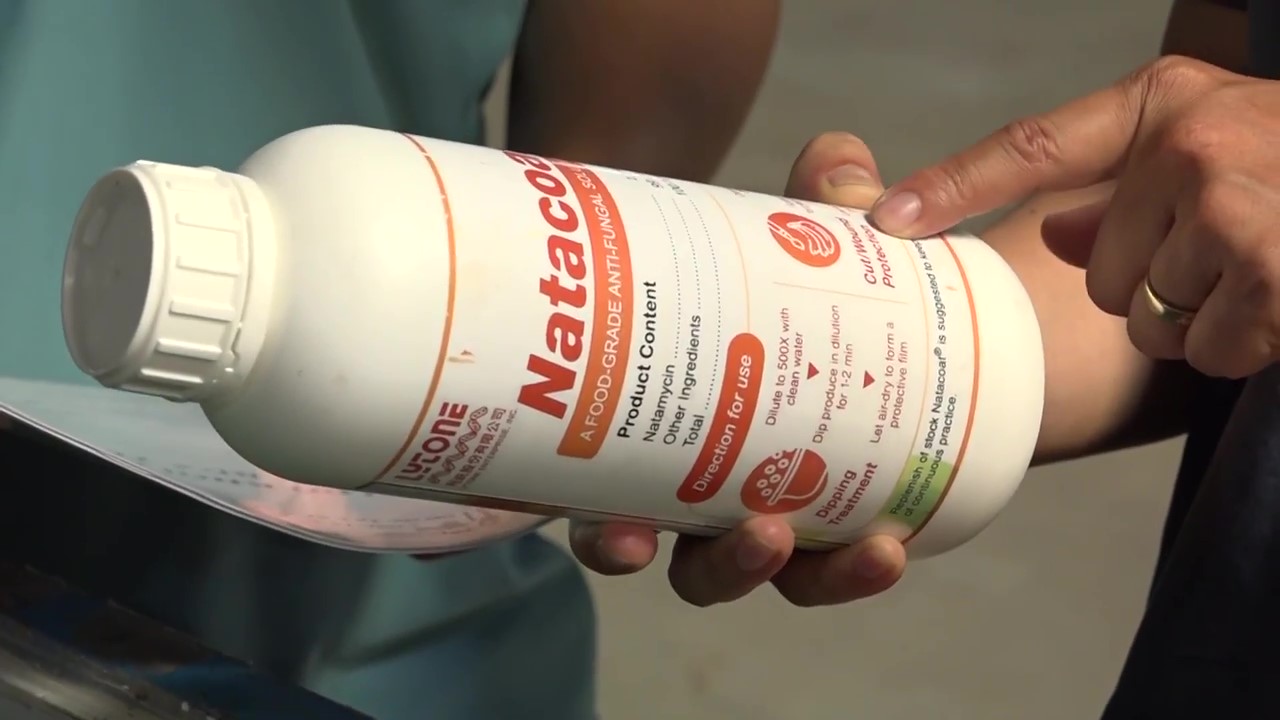
>>> See More : Natacoat Anti-Mold Preservation for Fruits and Vegetables
Q&A Frequently Asked Questions About Ginger Storage
1. Respiration and sprouting phenomenon of ginger?
Respiration and sprouting of ginger roots after harvest are common problems that can affect the quality of ginger roots. Here are the details of these two phenomena:
- Ginger root respiration: After harvesting, ginger roots continue to respire by consuming oxygen and releasing CO2. This process helps maintain cell life and growth processes. However, ginger root respiration can cause an increase in temperature and humidity inside the root. This creates favorable conditions for microorganisms to grow, causing damage and loss of ginger root quality.
- Ginger Sprouting: Sprouting is the process of sprouts starting to develop from within the root and usually occurs when the ginger root is damaged during harvesting or handling. Humid environments and warm temperatures promote sprouting. The growth of ginger sprouts can change the texture and flavor of the root, reducing the quality of the product.
To avoid respiration and sprouting of ginger roots after harvest, you can take preservation measures such as ensuring the roots are dry, well-ventilated, and stored at appropriate temperature and humidity.
2. What is the correct way to store ginger?
To properly store ginger and avoid respiration and sprouting after harvest, you can follow these methods:
- Drying ginger root: After harvesting, dry the ginger root by placing it in a warm, well-ventilated area. This helps remove moisture and prevents microbial growth.
- Keep the root dry: Store ginger root in a cool, dry place, away from direct sunlight. Ginger root should not be exposed to high humidity to prevent creating conditions for microbial growth.
- Use appropriate packaging: Use appropriate packaging such as paper bags or nylon bags to store ginger. Avoid using overly airtight packaging as this can create a humid environment for microorganisms to grow.
- Storing in the refrigerator: If you want to store ginger root for a long time, you can place it in the lower compartment of the refrigerator. However, keep the ginger root in a paper bag or a ventilated plastic container to avoid moisture.
- Use an adequate refrigerator: Make sure the refrigerator is not too crowded to provide space for air flow and prevent moisture from forming.
- Avoid pre-processing the root: Ginger root should not be pre-processed before storage, as processing can increase moisture and promote microbial growth.
- Regular Inspection: Regularly inspect your ginger root for any early signs of damage. If any root is damaged, remove it from the batch to avoid damaging other roots.
Remember, ginger roots also need to be handled carefully during harvesting and shipping to avoid damaging their internal structure.
See More:
- Top 12 Best Food Preservation Methods Today
- Top 11 Methods of Preserving Fruits and Vegetables After Harvest
- AnsiP 1-MCP Agricultural Product Preservation
- GreenMAP Bags Keep Vegetables And Fruits Fresher And Longer
- How to Preserve Fresh Longan After Harvest for Up to 30 Days
- Ways to Preserve Agricultural Products After Harvest to Export Standards
- The Fastest And Easiest Way To Preserve Fruit In Business?
- Natacoat Anti-Mold Preservation For Fruits And Vegetables
- Detailed Instructions on How to Preserve Oranges Fresh for a Long Time and Safely
- Ethephon Safe Fruit Ripening Agent
- KADOZAN Biological Product (Chitosan Content 2%)
- SUPER FRESH Ethylene Absorbent Bag
- Ethylene Absorber In Cold Storage For Vegetables And Fruits
- Ethylene Absorber KIF Filter Tubes
- How to Preserve Fresh Ginger for a Long Time, Prevent Mold – Ensure Export Standards to the US and Europe
- How to Preserve Fresh Pineapple for Long-distance Export
- HOCl Solution for Preserving Fruits and Food
- How to Preserve Fresh Phalaenopsis Orchids for Long-distance Transport and Export
- Instructions on How to Harvest and Preserve Avocados to Ripen Long Effectively
HOTLINE : 028.73002579 (HCM) – 024.73002579 (Hanoi)
Get advice and order quality, reputable products at:
SAO NAM JOINT STOCK COMPANY (SANCOPACK)
Email : info@vietnamtravelcard.vn.vn


